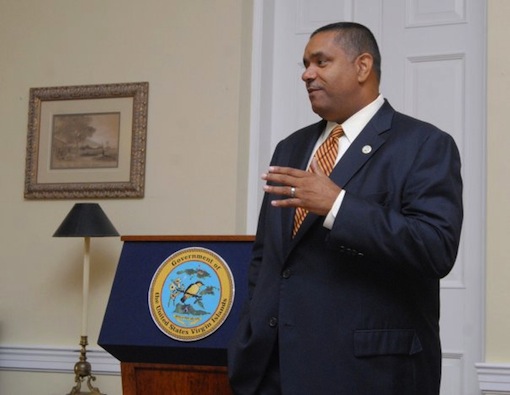Above: USVI Governor John de Jongh
By the Caribbean Journal staff
Last year, the United States Virgin Islands lost its primary provider of fuel when it was announced that the HOVENSA oil refinery would be shuttering.
That was only part of a wider energy problem for the Caribbean territory, which, like most of its neighbours faces significant costs to generate power.
Now, US Virgin Islands Governor John de Jongh is petitioning the federal government to provide additional help for Virgin Islanders facing difficulty in paying their utility bills.
In a letter to US Health and Human Services Secretary Kathleen Sebelius, de Jongh asked for $1 million in Low Income Home Energy Assistance Programme funding for fiscal years 2013 to 2015 to deal with what he called an “energy emergency” in the territory.
“The geographic isolation of the US Virgin Islands, compounded by the inability to achieve an interconnected grid within the Territory, and therefore necessitating the operation of two isolated electric systems, has resulted in power generating costs from fuel oil combustion that currently exceeds 51 cents per kilowatt-hour, and based on current market factors are threatening to go even higher,” he wrote. “That is five times the stateside average, for an economy with a per capita income well below that of the poorest state, even before the closing last year of our largest employer and taxpayer, the HOVENSA refinery on St. Croix.”
According to the government, utility customers in the USVI currently pay 2.5 times more per kilowatt-hour than residents of Hawaii, which pays the highest electricity rates of any US state.
“There is no doubt that the compounding effects of high unemployment, and high utility costs has put a tremendous squeeze on our families,” he wrote. “We are requesting special consideration for LIHEAP funds for this year and the next two years. After that I expect that many of the initiatives my Administration is putting into place will result in lower electricity costs.”
Some of those include wider rollout of solar projects, which are projected to provide 17 percent of the USVI’s power, along with wind power plans and the installation of a “heat recovery steam generator.”
